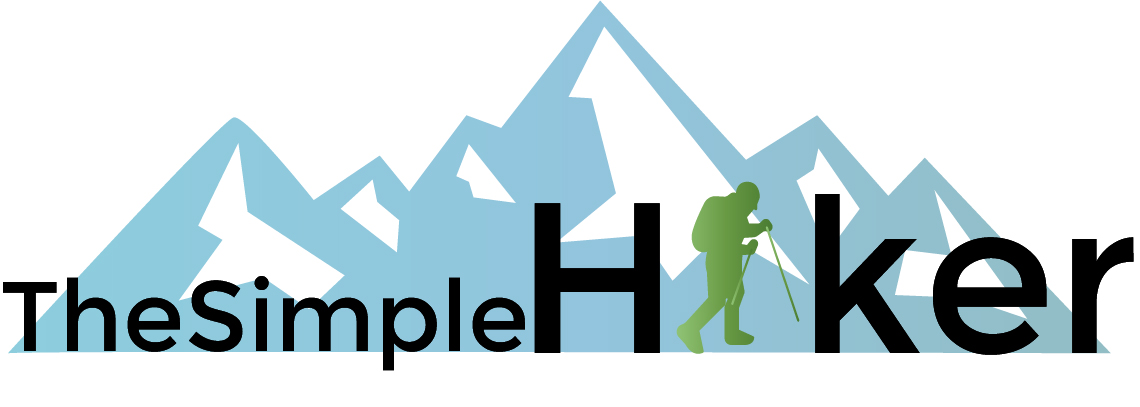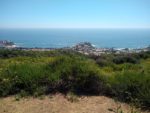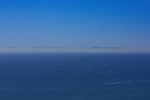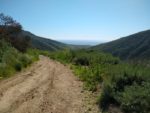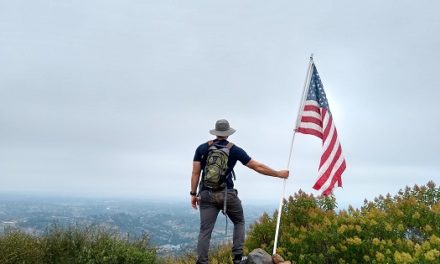Hiking Crystal Cove State Park
Fortunately, over the years developers haven’t been able to get their hands on the beautiful swath of open land that makes up Crystal Cove State Park. The result is 3.2 miles of open beach and 2,400 acres of open land for for outdoor use. While this is a multi-use state park that includes beach going, tide pool viewing, camping, and a housing historical district, the focus of this article will be on hiking.
Altogether there are several miles of hiking trails located within Crystal Cove State park ranging from easy (3.0 miles) to strenuous (over 9 miles in length). This trail guide will focus on what the state park calls their “difficult” trail that is approximately five miles with an elevation gain of about seven hundred feet. Although it’s not a focus of this article, short trails do extend from the parking lots to explore the three miles of coast line and tide pools as well.
Crystal Cove State Park Views and Wildlife
There are many views to take in while wandering through the mildly sloped hills in this state park. These hills are covered in dense thickets of coastal chaparral that make a nice home for quail, road runner, and the other 180 types of birds that have been documented in the park. Larger wildlife such as deer, bobcats, coyotes, and snakes can also be seen. During the spring, a variety of wildflowers from the wild onion, California Poppy, and wild sunflower light up the hills. There is a seasonal creek that flows through the heart of the park and ravines that capture the small amount of water are able to grow oak, sycamore, and cottonwood trees to name a few.
The hills of Crystal Cove state park look down on the white sand beaches below it with the town of Laguna Beach to the direct south. To the north views as far as Newport and Huntington Beach can be seen. Directly off the coast lies Catalina island. On clear days, the Santa Monica Mountains and San Gabriel Mountain ranges like Mount Baldy can be seen. To the east sit San Gorgonio Mountain and the Santa Ana Mountains including Sitton Peak.
Crystal Cove State Park History
Long before any European exploreres stumbled upon this area Native American tribes of the Gabrielino (Tongva) and Juaneno (Acjachemen) inhabited this area for over nine thousand years. In the early 1700’s, Spanish missionaries began to colonize the area. The most notable of these were San Juan Capistrano and San Gabriel. The missionaries began baptizing the Native Americans and absorbed them to work in their missions.
When Mexico gained its independence from Spain, the Mexican government began selling off parcels of land in the area. In 1837 the first owner of land where Crystal Cove sits belonged to Jose Andres Sepulveda, a famed landowner, horseman, and gambler. Sepulveda eventually went into debt and sold the land to a businessman named James Irvine from the Bay Area in 1864. The area was used for ranching for many years.
In 1894 Irvine’s son took over the land and created The Irvine Company. In order to create more money some of the ranch land was used to lease buildings to farmers and other business owners. Fast forward to the 1970’s when the rapid urban spread was consuming much of Southern California’s land. The Irvine Company still held on to open space where the park now is. Local environmental groups looked to preserve some of the last remaining plots of open land on the Orange County coastline and put pressure on the Irvine Company. In 1979 they sold their land to the State of California and the state park was born.
Crystal Cove State Park Camping
Camping is allowed within the park and there are many campsites to choose from. For the sake of this article, I will only mention the hiking spots that are for overnight backpacking trips. The “primitive” tent sites are only accessible by foot and require a three mile hike inland from the parking lot. No drinking water is available on site. Everything packed in must be packed out. There are no open fires permitted only backpack stoves. No pets.
For additional camping spots non-related to hiking or more information, please visit the park’s website. Camping reservations can be made here or by calling 1-800-444-7275. Reservations can be made forty-eight hours to seven months in advance.
On A Personal Note:
Crystal Cove is a beautiful swath of open land that’s preserved and surrounded by urban landscapes around it. There’s a lot to experience within this park from beaches, hiking, and camping. The coastline in this area is beautiful and very reminiscent of it’s neighbor to the far south, Torrey Pines State Reserve. For more trail information including park hours and fees, see the tabs below.
Do you have any updates to the hiking trail or want to share your hike/pictures? Please leave a comment below.
- Overall Difficulty: 65%
- Overall Views: 75%
Crystal Cove State Park Quick Facts:
- Elevation: 35-1000 feet.
- Elevation Gain: 35-1000 feet.
- Estimated Distance: 1-9 miles.
- My Actual Distance: 5 miles.
- Estimated Time: 1-6 hours (depending on route taken).
- My Time: 2 hours 26 minutes (including moving time).
Estimated distance, elevation gain, and time varies depending on route taken. Altogether the reserve holds several miles of trails.
Crystal Cove State Park Directions:
Parking Fees and Hours
Parking fees are $15. A State Park Pass is also accepted here as well. Park hours are from 6:00 a.m. to sunset. The park is open 365 days a year. Trails are closed for a brief period before, during, and after rain events to minimize erosion.
Crystal Cove State Park Pictures:
- The parking lot from El Moro Canyon Trail.
- Headed out from the parking lot looking east.
- Crossing a bridge where a seasonal creek flows.
- Looking to the north with the coastline and haze covering up the Santa Monica Mountains.
- Walking up the park’s gently sloped hills.
- Looking down over the coastline.
- Looking to the south towards the town of Laguna.
- Looking west to Catalina Island.
- Looking to the north across the rolling hills and ravines of Crystal Cove State Park.
- Looking inland towards the Santa Ana Mountains.
- As the trail winds closer, a snow capped San Gorgonio Peak can be seen.
- The trail winds down the canyon back towards the coast.
- Wildflowers.
- More wildflowers.
- A seasonal creak in the canyon allows the most dense vegetation growth.
- Wandering off the trail in the canyon would be a good way to probably come across some poison oak.
Who Hiking Crystal Cove State Park Is For:
Advanced Hikers: The trails are short and not necessarily strenuous but it’s nice to wander around open space areas of Southern California not lined with slabs of pavement and concrete. I did the park’s difficult loop which was up the coastal hills and back down to the parking lot for a total of about 965 feet of elevation gain and five miles.
Expert Hikers: While the trails don’t necessarily offer hikers a mountain backpacking experience, there can be some degree of difficulty found here. The entire park can be a loop for about nine miles. There are also overnight “primitive” campsites available to hike into. You must pack in what you’re going to use and there is no water source available. This could be a good option to help practice for longer overnight backpacking trips.
It’s always a good idea to be aware of what type of hiking level you’re at.
Best Time Of Year To Hike Crystal Cove State Park:
The direct coast will be the coolest in terms of temperature for this state park. During the summer months, the higher up on the hills and further inland the trail winds, the hotter it will get. Longer day hikes for the full loop of Crystal Cove will need sun protection and a generous amount of water. Some hot Santa Ana conditions and rare summer days can bring coastal temperatures to near 100 degrees. On those days it’s best to start early or not at all.
May and June can potentially be the worst time of the year to experience this trail if it’s sunshine you’re looking for. Prevailing westerly winds keep clouds hovering along the coast and sometimes they don’t burn off for days on end. The bright side is that the cloud cover keeps the temperatures on the cooler side.
As with any trail, it’s always a good idea to check the weather before heading out.
